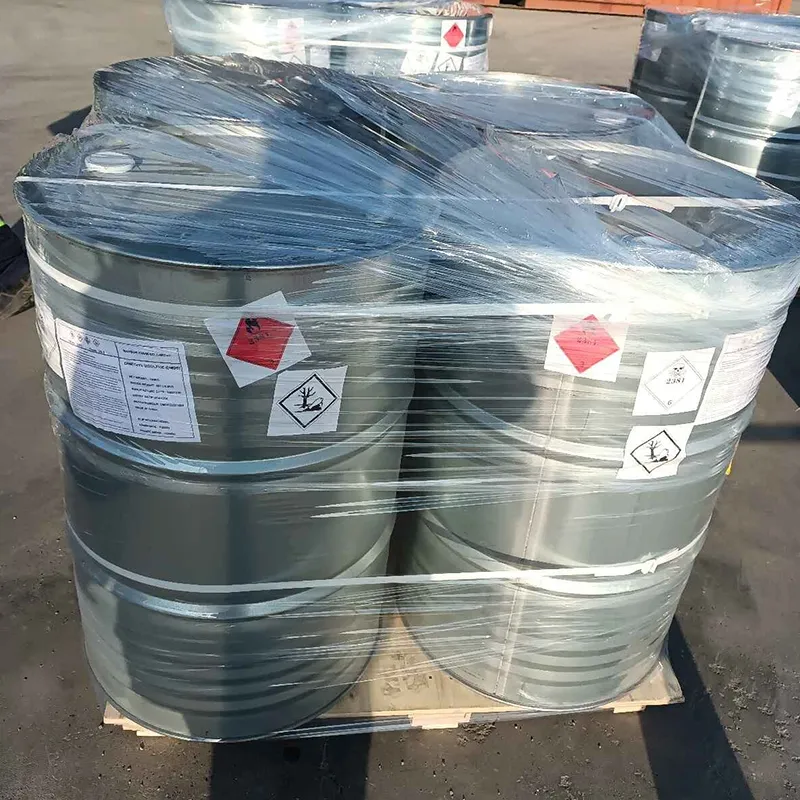
green solvents
Green Solvents A Sustainable Future for Chemistry
In recent years, the growing awareness of environmental issues and sustainability has led to significant changes in various industries. One area that has garnered particular attention is the use of solvents in chemical processes. Traditional solvents, while effective, often pose serious health risks and environmental hazards. As a result, researchers and industries alike are turning to green solvents as a more sustainable alternative. This article will explore what green solvents are, their benefits, and their role in promoting a sustainable future for chemistry.
What are Green Solvents?
Green solvents are defined as solvents that are designed to reduce toxicity and environmental impact. They can be derived from renewable resources, such as plant oils or natural compounds, and often possess properties that make them safer alternatives to traditional solvents. The classification of green solvents encompasses a wide range of substances, including supercritical fluids, ionic liquids, and bio-based solvents. Supercritical CO2, for example, is a solvent at elevated temperatures and pressures that can dissolve materials without the harmful effects associated with organic solvents. Ionic liquids, on the other hand, are salts that remain liquid at relatively low temperatures and can be designed to have low volatility and high thermal stability.
Benefits of Green Solvents
The adoption of green solvents offers numerous benefits that extend beyond their chemical properties. First and foremost, they contribute to the reduction of hazardous waste. Traditional organic solvents, such as benzene and dichloromethane, are not only toxic but also require careful disposal due to their harmful environmental effects. In contrast, many green solvents can be recycled or biodegraded, minimizing the amount of waste generated in chemical processes.
Furthermore, green solvents can offer improved safety for workers in laboratory and industrial environments. Many conventional solvents are associated with significant health risks, including carcinogenicity and neurotoxicity. By switching to greener alternatives, facilities can enhance the safety of their operations and reduce the risk of exposure for employees.
In addition, green solvents can lead to more efficient chemical reactions. Their unique properties often allow for lower energy requirements during processes such as extraction, reaction, and purification. For instance, using supercritical CO2 in extraction processes can yield higher efficiencies compared to traditional solvents, resulting in better product yields and lower energy consumption.
Industry Applications of Green Solvents
green solvents

The potential applications for green solvents are vast and varied. In the pharmaceutical industry, for example, the use of green solvents can streamline drug formulation and enhance the safety profile of medications. Leading pharmaceutical companies are increasingly embracing green chemistry principles to develop more sustainable methods of drug synthesis, thereby reducing waste and improving product safety.
Similarly, the cosmetics and personal care industry is witnessing a shift towards green solvents. Consumers are becoming more aware of the ingredients in their products, pushing companies to adopt sustainable practices. Green solvents derived from natural sources can be used in formulations, significantly reducing the reliance on harmful chemicals.
The agriculture sector is another area where green solvents are gaining traction. They are being used in the synthesis of green pesticides and herbicides, allowing for effective pest control while minimizing harmful environmental impacts. Moreover, bio-based solvents can be derived from crop residues, creating a circular economy and reducing reliance on fossil fuels.
Challenges and Future Directions
Despite the clear advantages of green solvents, there are challenges to their widespread adoption. The costs associated with developing and implementing these alternatives can be high, and there is a need for further research to improve the efficiency and scalability of green solvent technologies. Moreover, educating industries and researchers about the benefits of green solvents and equipping them with the knowledge to implement these changes is crucial for progress.
As public awareness of sustainability increases and regulations surrounding environmental protection become more stringent, the demand for green solvents is expected to rise. The chemistry community must work collaboratively to innovate and implement greener practices that not only enhance chemical processes but also contribute to a healthier planet.
Conclusion
The transition to green solvents represents a significant step towards sustainable chemistry. By reducing toxicity, minimizing waste, and enhancing process efficiency, green solvents pave the way for a more responsible and eco-friendly chemistry industry. As research continues and industries pivot towards greener practices, the future of solvents is undoubtedly shifting, promising a healthier world for generations to come.
-
Buy High-Quality Trichloroisocyanuric Acid for Sale | TCCA 90% SupplierNewsAug.30,2025
-
Pure Sodium Dichloroisocyanurate Dihydrate | Powerful DisinfectantNewsAug.29,2025
-
Industrial Chemicals: Quality & Purity for Every IndustryNewsAug.28,2025
-
Nitrile Rubber Honoring Strict Production StandardsNewsAug.22,2025
-
Aspartame Ingredients Honoring Food Safety ValuesNewsAug.22,2025
-
Fertilizer for Balanced Plant NutritionNewsAug.22,2025
-
Cyanide Gold Processing with High Purity AdditivesNewsAug.22,2025
Hebei Tenger Chemical Technology Co., Ltd. focuses on the chemical industry and is committed to the export service of chemical raw materials.
-

view more DiethanolisopropanolamineIn the ever-growing field of chemical solutions, diethanolisopropanolamine (DEIPA) stands out as a versatile and important compound. Due to its unique chemical structure and properties, DEIPA is of interest to various industries including construction, personal care, and agriculture. -

view more TriisopropanolamineTriisopropanolamine (TIPA) alkanol amine substance, is a kind of alcohol amine compound with amino and alcohol hydroxyl, and because of its molecules contains both amino and hydroxyl. -

view more Tetramethyl Thiuram DisulfideTetramethyl thiuram disulfide, also known as TMTD, is a white to light-yellow powder with a distinct sulfur-like odor. It is soluble in organic solvents such as benzene, acetone, and ethyl acetate, making it highly versatile for use in different formulations. TMTD is known for its excellent vulcanization acceleration properties, which makes it a key ingredient in the production of rubber products. Additionally, it acts as an effective fungicide and bactericide, making it valuable in agricultural applications. Its high purity and stability ensure consistent performance, making it a preferred choice for manufacturers across various industries.





